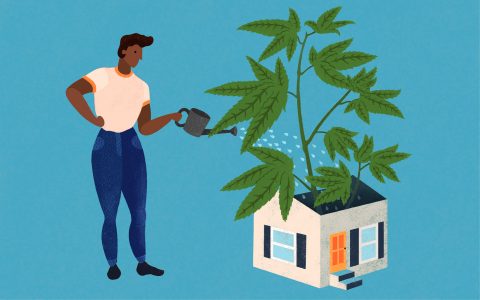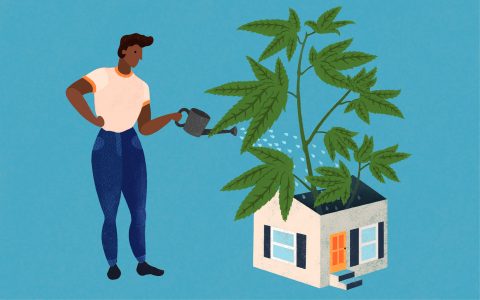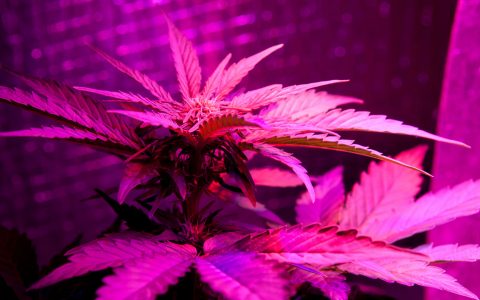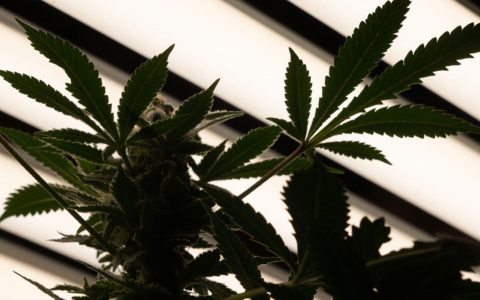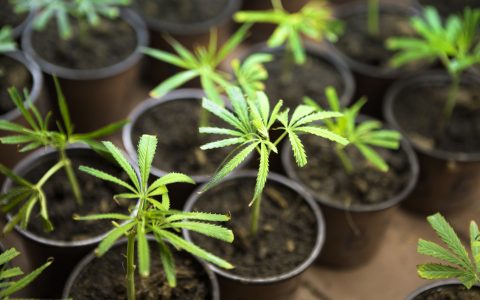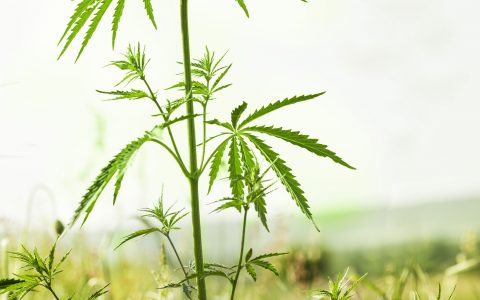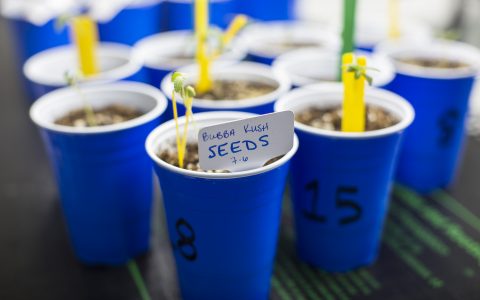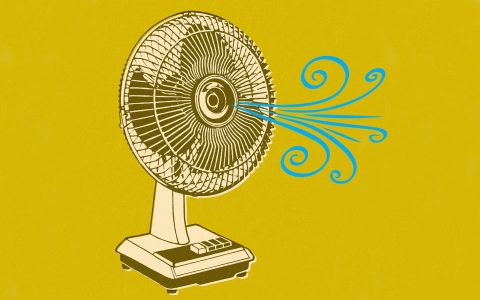For those who don’t have big properties or extra space, don’t worry: You don’t need a huge space to grow cannabis. Cannabis is an eager plant that will grow nearly anywhere given the right light and nutrients, making a grow room of any size feasible.
Growing in a tiny space has benefits too, allowing you to produce cannabis discreetly, in case you’re afraid of what the neighbors will think. A small grow also won’t create as much noise from machines or generate as much smell and will therefore attract less attention.
A small grow doesn’t necessarily mean small returns, but, you do want to be growing as efficiently as possible. Here are some tips to maximize your tiny space to get the best and biggest returns.
What Your Space Needs
A grow space can be as small as a 2’ x 2’ x 4’ grow tent or as big as a warehouse, but they all have a number of things in common.
- Adequate space for growth. The bigger the plant can grow, the larger your yields will be. Generally, you’ll need more height than width, to keep the lights off the plants. Space gets tight quickly.
- Sterilization. Dirty closets won’t suffice—you must be able to keep the space clean and contained from the outside environment. You’ll also need to be able to drain the plants properly and keep them out of standing water.
- Ventilation. Plants need fresh air. A continual exchange of air is necessary to keep them healthy and vibrant. Depending on where you live, you may need an AC unit or heater to regulate the climate.
Many small-space growers use grow tents, small units where you can grow one to a handful of plants—they can be as small as the size of a laundry hamper. These self-contained units will provide a controllable environment for your plants without the hassle of building out a big grow.
Don’t Burn the Plants
One of the biggest concerns with a tiny grow is lighting. Grow lights run very hot and need to be kept at a safe distance from your plants so they don’t burn buds or leaves. Either the plants must be kept short or your lights need to be elevated—the latter can be hard to pull off in a confined space, so usually plants need to be kept small through topping and pruning.
LEDs are changing the game for small-space growing by providing quality full-spectrum light with minimal heat. This allows plants to grow closer to the light source without damage from heat, while also reducing the need for climate-control equipment to bring down the temperature in your grow. It should be noted that LEDs can still burn your plants, but there is less of a risk than with older lights.
This will give your plants more room to grow and therefore give you a bigger return when it’s time to harvest.
Train Your Plants
With a limited space, you can also train your cannabis plants to increase yields. Some effective methods include:
- Scrogging (screen of green)
- Low-stress training (LST)
- High-stress training (HST)
Scrogging is probably your best bet for getting a high return with minimal space. This process involves weaving the stalks and branches of a plant through a screen—mesh sizes usually range from 3-6 inches square—before switching to a flowering light cycle.
This spreads out the plant’s branches, allowing all nodes to receive more light and also opening up the plant so that middle and lower branches can receive more light. This will give you a level canopy that will fill out with big colas.
Everything below the canopy can be pruned to save energy and keep the space clean and free of pests while the buds have direct exposure to light, increasing your yield.
Low-stress training involves tying down parts of the plant to create offshoots that will lead to additional cola sites.
A more aggressive method, high-stress training increases cola sites through topping or super cropping to promote an even canopy and increased cola sites.
Know Your Genetics
Sativas, indicas, and hybrids all grow differently. Sativas are known for their lanky growth and more open bud structure, while indicas tend to grow short and stocky and have denser buds. Hybrids can have traits from both.
For a tiny grow, indicas will probably be easier to maintain when looking to maximize your space and yield because of their short and stocky nature. Sativas can work too, but you might have to spend more time and attention in pruning them.
Keep in mind that this is a generalization of strains—some indicas grow tall, and some sativas grow short. Be sure to check out Leafly’s strain explorer for growing tips on specific strains.
You can also try growing autoflowering cannabis, plants that start flowering when they get to a certain age, rather than when the light changes. They also grow short and small.
Keep Your Roots Healthy
The grow medium is the home for roots, which send water and nutrients to the rest of the plant. A quality grow medium is especially important for a tiny grow in order to get the most out of a plant in a cramped condition.
Try using complete soils or super soils—they have a majority of the nutrients a plant needs and they allow a plant to efficiently store water for a longer time between waterings.
Be sure to include enough soil in your pots to prevent roots from getting bound. Frequently check to see if roots are exposed. If you see them coming out of the drainage holes at the bottom of the pot, it’s time to transplant it to a bigger pot.
A stunted plant that appears droopy even after watering can also be a sign of roots being bound and needing more soil.
Control the Climate
Climate control is also crucial in a tiny grow. Ideally you want to maintain a healthy temperature of 70-75 degrees with a relative humidity between 40-75%. Using LED lights will reduce the overall temperature and your need to cool down your grow, but you will still need a fan to pull fresh air into your grow space.
Fresh air circulation is crucial to getting high yields, as your plants use CO2 in the process of photosynthesis. Fresh air will give them a boost of growth and will also be effective in cycling new air into your garden while pulling out stale air, keeping the temperature and humidity in check.
Tiny grows can be a lot of fun and will give you insight on the growing process and these methods will improve the quality and yield of your cannabis.

